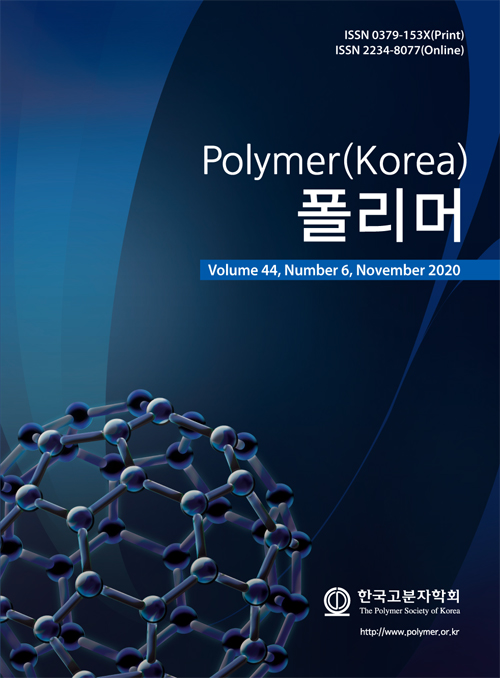- Synthesis of Methacrylate Derivatives Based on Abietic Acid and Their Photo-curing Properties
Department of Engineering Chemistry, College of Engineering, Chungbuk National University, Cheongju 28644, Korea
- Abietic Acid 기반 Methacrylate 유도체의 합성과 광경화 특성
충북대학교 공과대학 공업화학과
In this study,
methacryloyl-2-hydroxypropyl abietate (MHPA) was synthesized through the
reaction of abietic acid, a plant-derived natural substance, with glycidyl
methacrylate. The synthesized MHPA was mixed with various ratios of
poly(ethylene glycol) dimethacrylate (PEGDMA) to prepare a photocurable resin,
and the effect of MHPA content on curing behavior was evaluated. As a result,
it was found that while the MHPA content increased, the degree of curing
decreased, but the curing efficiency of 96% was maintained up to 30 wt% of
MHPA. In addition, the presence of MHPA reduced the hydrophilicity of the cured
film and improved the peel strength and elastic modulus. In particular, the
peel strength and modulus of elasticity were improved by 140% and 500%,
respectively, in the cured film containing 30 wt% of MHPA
본 연구에서는 식물유래 천연물질인 abietic acid와 glycidyl methacrylate의
반응을 통해 methacryloyl-2-hydroxypropyl abietate(MHPA)를 합성하였다. 합성된
MHPA는 다양한 비율의 poly(ethylene glycol)
dimethacrylate(PEGDMA)와 혼합되어 광경화용 레진으로 제조되었으며 MHPA가
경화에 미치는 영향을 평가하였다. 그 결과 MHPA 함량이
증가할수록 경화도가 감소하였지만 30 wt%까지는 96%의
경화도를 유지하였다. 또한 MHPA의 존재는 경화필름의 친수성을
감소시키고 박리강도와 탄성계수에 대한 개선을 가능하게 하였다. 특히
30 wt%의 MHPA가 포함된 경화필름에서 박리강도와 탄성계수가 각각 140%와 500% 향상된 결과를 보여주었다.
Keywords: abietic acid, photoinitiator, methacrylate, photo-curing, adhesive properties
- Polymer(Korea) 폴리머
- Frequency : Bimonthly(odd)
ISSN 0379-153X(Print)
ISSN 2234-8077(Online)
Abbr. Polym. Korea - 2023 Impact Factor : 0.4
- Indexed in SCIE
 This Article
This Article
-
2020; 44(6): 875-880
Published online Nov 25, 2020
- 10.7317/pk.2020.44.6.875
- Received on Jul 24, 2020
- Revised on Sep 16, 2020
- Accepted on Sep 16, 2020
 Correspondence to
Correspondence to
- Sang-Woog Ryu
-
Department of Engineering Chemistry, College of Engineering, Chungbuk National University, Cheongju 28644, Korea
- E-mail: swryu@chungbuk.ac.kr










 Copyright(c) The Polymer Society of Korea. All right reserved.
Copyright(c) The Polymer Society of Korea. All right reserved.